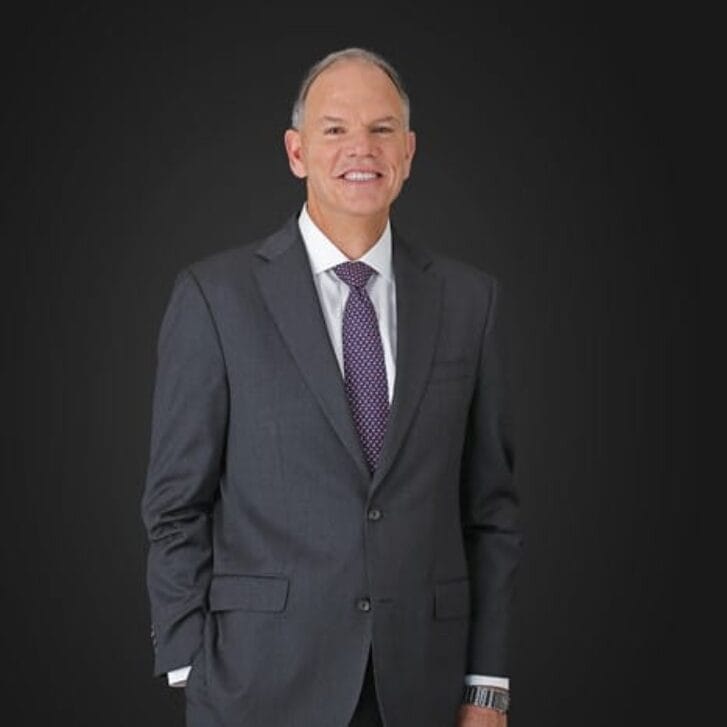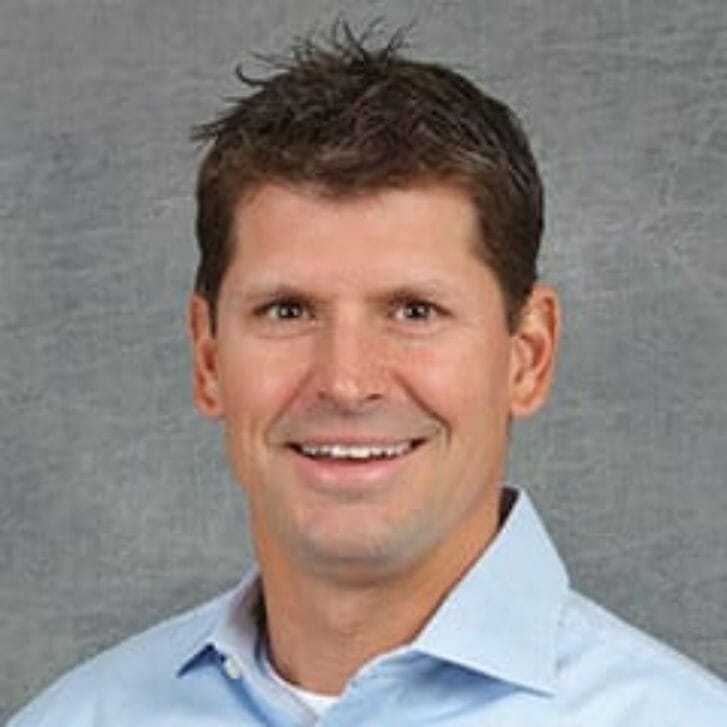When NASA had its R&D budget slashed, it came to its partner, the Mack Institute, to assist it in crowdsourcing many of its most pressing problems. Solutions abounded, and from unlikely places. The best idea for preserving food in space came from someone outside the food industry; a better predictive tool for solar flares came from a retired radio frequency engineer who exceeded the parameters without even having the basic datasets.
When Procter & Gamble was developing its pathbreaking Connect+Develop model to innovation, a P&G executive presented the basic approach at a Mack Institute conference. Other Mack industry partners got an early look at a powerful open innovation model and explored its implications before Connect+Develop received wide attention in the business press. Working together with P&G, the Mack Institute then launched an open innovation research initiative to better understand the pros and cons of looking for innovation ideas beyond a company’s own boundaries and industry. By now, Connect+Develop has generated more than 2,000 agreements with P&G’s “innovation partners” and has been responsible for 42 percent of the new products used for making inroads in high-growth emerging markets.
The Mack Institute has provided a high-octane forum since 2001 where companies can learn how peers are coping with the “creative destruction of emerging technologies,” to paraphrase economist Joseph Schumpeter. Senior corporate managers share their firms’ experiences, and in turn they are rewarded with deep insights gleaned from years of rigorous multidisciplinary studies across a range of firms and industry sectors, dealing with existential issues of surviving and thriving in markets of huge risk and opportunities.
The Institute’s partner-centric approach serves up strategic relevance that continues to attract leading companies determined to maintain that position.
“Virtually everything we do is dictated by the concerns, issues and research priorities of our partners,” says co-director and Geoffrey T. Boisi Professor George Day. “These are leading-edge firms in some of the highest technology sectors, IT, pharmaceuticals, auto. So they are wrestling with really tough problems … how to manage under extraordinarily high levels of uncertainty.”
“We are not a consulting firm,” adds Harbir Singh, another of the four Mack Institute co-directors. “We are neutral ground for executives and academics and policymakers to meet and talk about new ways of innovating their track record.”
The total worth of these exchanges is not always obvious, less often acknowledged. Sure, the Mack Institute has “kept 17 partners happy over the 15 years,” explains Day. But some wider-spread credit—at least for facilitation—would be nice. That unsung added value, says Singh, who also serves as Wharton’s Mack Professor of Management and vice dean of global initiatives, comes with the territory.
Still, change is underway. A new gift from long-time benefactor William L. Mack, W’61, has enabled what was previously known as the Mack Center for Technological Innovation to take on a broader role on campus and in the world, as well as deepen its research and outreach agenda, while continuing at its core practices.
Saikat Chaudhuri, ENG’97, W’97, the Mack Institute’s first ever executive director and an adjunct associate professor of management, is in part charged with making this happen while raising the visibility of the Institute. He seeks to forge a brand value commensurate with the highly regarded work of individual researchers and bring the words “Mack Institute” top of mind for all seeking to master management
of innovation, in academia and industry.
That drive for increased visibility inspired the decision to hold the Institute’s past spring conference at Wharton | San Francisco, for example. It turns out there is growing interest among many of Silicon Valley’s former insurgent upstarts (think Google and Facebook) in the Mack Institute’s expertise in how firms keep their edge once they become incumbents.
Brand recognition is sure to follow from the expansion of existing and new initiatives at the Institute, which demonstrate its present relevance and its future promise.
INTERDISCIPLINARY HUB
The University of Pennsylvania ranked 24th in a list of 157 universities based on licensing revenue for FY 2012, according to the Association of University Technology Managers. The Mack Institute aims to play an important role improving that performance, more in line with the intellectual property (IP) generated by the leading research engine that is Penn.
More directly than ever before, Mack Institute faculty and fellows train their empowering insights across campus, both to infuse academic excellence around the University’s disparate commercialization efforts, as well as to stoke new crossdisciplinary collaborations that can serve as the seed-beds for many innovations.
“The mission really is to become a hub for thought leadership on innovation management and its application at Wharton, but also across campus, to be able to connect to scholars, students and industry,” says Chaudhuri.
This is something Institute scholars have long been doing, though informally, ever since its shingle first went out, say long-timers. Going forward, efforts will be more formalized. For instance, as Chaudhuri explains, Mack Institute scholars will offer seminars across campus to help researchers in other disciplines to understand their commercial prospects and how those can be pursued.
That does not mean that the Mack Institute is getting directly into commercialization efforts. There is an existing campus ecosystem for that, led by the Center for Technology Transfer (CTT) and its staff of 27, who handle nuts-and-bolt matters, file patents applications, negotiate intellectual property agreements and the like. Another program, UPstart, has helped faculty launch 50 companies in recent years. Overall, commercialization agreements on campus rose from 46 in 2008 to 186 by 2012.
Yet why is commercialization of University-generated innovations not a more strategic priority?
Some regard Penn as something of a “sleeping research giant,” too much of its IP cache left slumbering outside commercialization channels. At the same time, the CTT is already deluged, sifting through and investigating 350 to 400 innovation discovery submissions a year.
As a place of higher learning and pure research, Penn will benefit from the Mack Institute’s on-campus presence far beyond financial gain. Already substantial funding for research by graduate and post-doc students will increase meaningfully over time. An expanded endowment also enables greater Institute outreach to faculty and researchers from other schools, the Perelman School of Medicine in particular, but also the School of Engineering and Applied Science, among others, to participate in and present during Institute-sponsored events. The wider welcome also extends beyond campus to researchers at other area universities, and relevant public officials. Undergraduates, too, will see more engagement through these stepped-up activities, as well as from initiatives such as the annual Y-Prize Competition—the campus contest co-sponsored by the Mack Institute in which student teams devise innovative commercial applications for technology invented by Penn researchers and winning teams receive $5,000 and nonexclusive rights to commercialize it.
| THE MAN BEHIND THE MISSION William L. Mack, W’61, knew from the launch of the Institute that bears his name that it possessed great potential. “When the Institute was launched, the dean [then-Dean Patrick Harker, CE’81, GCE’81, GR’83, HOM’87] was very cognizant of the fact that technological innovation and business were approaching an apex, where one could be very helpful to the other and where the Wharton School could be helpful to business, not necessarily just to research but to be helpful in business in a technologically exploding world,” Mack told us during a Q&A this past spring. Now that “Institute” appears in its name, Mack the man believes it will have “the ability to do more, to tackle problems that we didn’t have the resources to tackle before as a center.” “I think now the goal, as I said before, is to work business, research and the Wharton School together to form partnerships so that it will benefit both sides,” he said. The full Q&A with Mack can be found in Wharton Magazine, Summer 2013. —Matthew Brodsky |
EXPLOSIVE POTENTIAL
Improvised explosive devices (IEDs), the highly lethal asymmetrical weapon of choice in Iraq, prompted Uncle Sam to spend billions on R&D countermeasures. Drone deployment has helped, but models such as the Predator can require 10 Air Force technicians to operate, while ground-based detection alternatives can only travel at 3 mph. An intriguing alternative solution, far easier and cheaper to put in theater, arose from the Y-Prize.
When fully developed, this technology allows single soldiers with an iPad to control a phalanx of 10 or more multirotor, flying robots that cover terrain at 20 mph. The core technology—the software to control the robot swarm—germinated in Penn’s GRASP Lab, but it was the Y-Prize Competition that sparked the final student-led systems integration and sensor miniaturization needed for this application, which could also lead to a range of civilian uses. After winning the competition, one of the students behind the robot, Richard Zhang (then a sophomore engineering student), put school on hold, incorporated, raised VC funding, attracted major defense contractor interest and was already traveling around the country this autumn talking to potential customers. His former SEAS professor Vijay Kumar continues as the lead scientific adviser for the company, IDENTIFIED Technologies Corporation. (The other co-founders are Andy Wu, a Wharton doctoral candidate in applied economics, and electrical engineering student Kelsey Duncombe-Smith.)
The Y-Prize challenge is to imagine new applications for a “general purpose technology”—in the case of the first year, three types of robots developed by the engineering Penn’s RASP Lab. (Two other GRASP professors helped develop the winning robot platform: Daniel Koditschek and Mark Yim.) This year’s competition is open to a global audience, through the product development platform Marblar, with finals to be held on campus in April 2014.
“We’re hoping to rotate the technical base to spotlight different Penn technologies, and not just the physical sciences or engineering, but also the medical science as well, where we have a lot, and possibly others,” explains David Hsu, the Richard A. Sapp Associate Professor and Y-Prize co-founder.
DRIVING INNOVATION
The automobile is on the verge of the first significant “dominant design” change in a century because of advances in multiple technology streams feeding into vehicles. That makes a global research consortium focused on the industry very relevant, but an academic network set up at MIT in 1985 had, in recent years, courted moribundity. That left an opening for Mack Institute scholar and an associate professor in Wharton’s Management Department, John Paul MacDuffie, long affiliated with the MIT network, to bring it to Philly and oversee its rejuvenation.
Now called the Program for Vehicle Mobility Innovation (PVMI), the auto industry-focused group includes more than 50 prominent scholars of innovation, strategy, technology, operations, organization and human resources who have conducted interdisciplinary—often collaborative—research at more than 25 universities worldwide.
“For us the big trigger [in bringing PVMI here] was really the significant change … where all of a sudden the industry is now much more an emerging technology industry and actually falls right into all the questions we work on, right into the rubric of the research we do,” says Nicolaj Siggelkow, a Mack co-director and the David M. Knott Professor.
Editor’s note: Watch highlights from the 2013 BizTech@Wharton Conference, co-sponsored by the Mack Institute.
PRESCRIPTIVE COLLABORATION
There are other veins of Mack scholarship that can be useful across campus. Paul J. H. Schoemaker, WG’74, GR’77, the Institute’s research director, offers what can be learned from mistakes, a subject he has written an entire book about. The Perelman School of Medicine, for one, has already taken this to heart by documenting mistakes, he notes, in regular morbidity, mortality and near-misses during hospital meetings. This led to an operational innovation whereby nurses counting out pills “now wear a hat, or wear a scarf that is a certain color, yellow, let’s say—which really means to everybody who knows: don’t disturb—that will already reduce errors a great deal,” Schoemaker says.
The example illustrates the broader view of the Institute’s role with the med school and Penn Medicine. Christian Terwiesch, Mack co-director and Wharton’s Andrew M. Heller Professor, explains it as a focus on “how technology is fundamentally changing how we deliver care.”
“We have to think of clever ways of delivering on customer needs,” he says.
Being a powerhouse in translational research, Penn also has substantial and growing ties with nearby big pharma, which is always looking to improve its hugely expensive and risky drug discovery process. Mack can be helpful in this, Schoemaker insists, by posing bigger picture questions the industry’s C-suite executives need to confront.
Case in point: To what ends should innovation be directed for the appropriate balance between investing in drugs primarily for wealthy OCED citizens versus diseases afflicting many millions more in developing countries with less purchasing power?
“These are some of the bigger issues we have to help business confront,” says Schoemaker. “We are fighting, in my personal view, a very a deep ideological battle about whether business is really a force for good or not.”

























